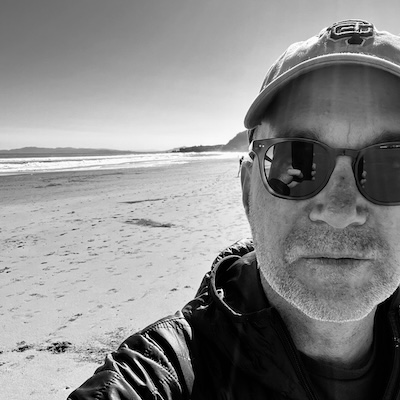there are 7 posts from May 2008
sydney pollack and the ache
Via somewhere that I can’t remember right now, Trish Deitch at The New Yorker on Sydney Pollack. As a Pollack fan I’ve been reading a bunch of obits on Pollack this week, and while there’s been a lot of talk about Pollack as a classically conservative filmmaker who makes Good Films, Deitch’s post is the one that resonated with me the most…
Finding the spine of a story like “Out of Africa” was important to Sydney for many reasons, the most important of which was that it led to what he called “the ache.” The ache is self-explanatory if you’ve seen Sydney’s films. It is the ache of having one chance at deep love in a lifetime of shallow loves, and losing it too early. It is the ache of perfect, private union destroyed by terrible, worldly circumstance. For Sydney, the ache was about the way that the things we hold most dear always elude us.
“The ache” is at the core of what I love about Three Days of the Condor, Absence of Malice and even Tootsie, as well as Pollack’s acting in Husbands and Wives, Eyes Wide Shut and Michael Clayton. On the list to watch, Pollack’s documentary on Frank Gehry.
wsj on the fall of bear stearns
The Journal has been running its three-part series on the fall of Bear Stearns, and it’s absolutely worth reading, assuming you have a reasonable amount of stomach lining to spare. Worth quoting at length, this excerpt about the Sunday night conference call between a group of “Wall Street CEOs” (the Journal’s words, not mine) discussing the (then) $2 per share buy out of Bear by J.P. Morgan…
Messrs. Geithner and Dimon led off with some brief remarks, noting that J.P. Morgan would be guaranteeing Bear Stearns’s debts and that if the pact hadn’t come together, the market impact may have been catastrophic. During the question-and-answer session, Citigroup Inc.’s new CEO, Vikram Pandit, spoke up.
Mr. Pandit – who did not initially identify himself – asked a shrewd but technical question: How would the deal affect the risk to Bear Stearns’s trading partners on certain long-term contracts?
The query irked Mr. Dimon. “Who is this?” he snapped. Mr. Pandit identified himself as “Vikram.” Offended that Mr. Pandit was taking up time with what he considered granular inquiries, Mr. Dimon shot back, “Stop being such a jerk.” He added that Citigroup “should thank us” for staving off further mayhem on Wall Street.
The online feature has all sorts of video and links to archived stories about the fall.
cleaning out the browser tabs
It’s about time I blog about all the open tabs in my browser, just so I can clear my head and get on with my life.
- They’re making a movie version of The Road. Nuclear apocalypse! Cannibalism! With a charming young child actor!
OK, that was the only open tab…and blogging it isn’t making me feel any better. After all, I doubt that even Viggo Mortensen can play it bleak enough to do justice to this line:
When your dreams are of some world that never was or of some world that never will be and you are happy again than you will have given up. Do you understand? And you can’t give up. I won’t let you.
Hooray for Hollywood!
kaizen and fight or flight
Via 43Folders (Merlin, glad to see you back stringing together more than 140 characters at a time!), this little snippet in a NYTimes piece from M.J. Ryan on the benefits of practicing kaizen…
Whenever we initiate change, even a positive one, we activate fear in our emotional brain. … If the fear is big enough, the fight-or-flight response will go off and we’ll run from what we’re trying to do. The small steps in kaizen don’t set off fight or flight, but rather keep us in the thinking brain, where we have access to our creativity and playfulness.
Usually when I quote things like this I say “go read the rest.” But this time, not so much. That’s basically the best graf in the piece. (Look, I’ve just saved you time! Now go outside and enjoy the sunshine for a few minutes.)
rauschenberg on erased de kooning drawing
I went looking for a bit of Rauschenberg on YouTube this morning, and came across this quick four and a half minute piece on one of my favorites of his, the Erased de Kooning Drawing, from 1953.
I love this bit, about a minute and a half in…
“I kept making drawings myself and erasing them. And that just looked like an erased Rauschenberg. You know, it was nothing. So I figured out that it had to begin as art. So it was going to be a De Kooning. It was going to be an ‘important’ piece. You see how ridculously you have to think, in order to make this work?”
Michael Kimmelman’s obit in the New York Times also captures this great Rauschenberg quote:
“I really feel sorry for people who think things like soap dishes or mirrors or Coke bottles are ugly,” he once said, “because they’re surrounded by things like that all day long, and it must make them miserable.”
everything you hear is a decision
Andrew Bird has a great post in the Times today about the process of recording music. It’s a great look into the thousands of little decisions that go into making a great record…
We discuss a lot of things to help us get the songs just right — like not hitting cymbals because the crashes can be “cheap thrills.” Instead we favored the dark, walloping sound of the toms. Often times the choice becomes: Do you give the song what it wants? Or do you go against its demands? “Oh No” seemed to be asking for a 1970s Jackson Brown or Fleetwood Mac type of dead snare drum sound. That “everything’s gonna be just fine” sort of beat. The pitfall of approaching it like this is that your song can get hijacked by someone else’s record collection. I personally feel that the world has had its fill of 70s light rock. So we’re forced to be more creative.
The post is a great reminder that everything you hear that comes out of a studio is the result of thousands of little decisions that build on top of one another. And that when the technology affords you the ability to do anything you want, you need a strong vision and sense of purpose to guide what you’re doing.

